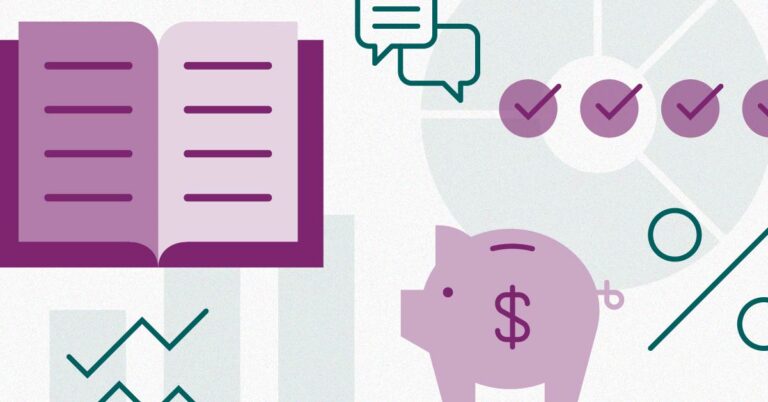When it comes to taxes, everyone wants to pay their fair share but no more than necessary. Fortunately, the tax code provides a variety of deductions and credits that can help you reduce your tax bill legally. Understanding how to take advantage of these opportunities can help you keep more of your hard-earned money. Here’s a guide on how to reduce your tax bill through legal deductions and credits.
1. Take Advantage of Tax Deductions
Tax deductions reduce the amount of your income that’s subject to taxation, lowering your overall tax liability. There are two main ways to claim deductions: by itemizing them or by taking the standard deduction.
Standard Deduction
The standard deduction is a fixed amount that reduces the income you pay taxes on. The amount depends on your filing status. For 2023, the standard deduction amounts are:
- $13,850 for single filers and married individuals filing separately
- $27,700 for married couples filing jointly
- $20,800 for heads of household
For most taxpayers, taking the standard deduction is the simplest option, as it requires no record-keeping.
Itemized Deductions
If your deductible expenses exceed the standard deduction, it might be worth itemizing. Common itemized deductions include:
- Mortgage interest: If you own a home, you can deduct interest paid on your mortgage, up to certain limits.
- State and local taxes (SALT): You can deduct state and local income, sales, and property taxes, up to a combined total of $10,000.
- Medical expenses: You can deduct qualified medical expenses that exceed 7.5% of your adjusted gross income (AGI).
- Charitable donations: Donations to qualifying charities are tax-deductible, but you’ll need to keep receipts for any donations you wish to deduct.
- Investment interest: If you borrow money to make investments, you can deduct the interest you pay on the loan.
If you’re close to the standard deduction, you may want to consider bunching your itemized deductions—combining deductible expenses (like charitable donations or medical expenses) into a single year to exceed the standard deduction threshold.
2. Maximize Tax Credits
While deductions reduce your taxable income, tax credits directly reduce the amount of tax you owe, making them even more valuable. Some tax credits are refundable, meaning they can result in a refund even if you owe no tax. Here are some of the most common tax credits that can help lower your tax bill:
Earned Income Tax Credit (EITC)
The Earned Income Tax Credit (EITC) is a refundable credit designed to benefit low- to moderate-income individuals and families. The amount you receive depends on your income, filing status, and number of children. For the 2023 tax year, the maximum credit ranges from $600 to over $7,400, depending on your household situation.
Child Tax Credit (CTC)
The Child Tax Credit provides a credit of up to $2,000 per qualifying child under the age of 17. Up to $1,500 of the credit may be refundable if it exceeds your tax liability. If you have dependents who aren’t eligible for the full child tax credit (e.g., older children or other dependents), you may still qualify for a $500 non-refundable credit.
American Opportunity Tax Credit (AOTC)
The American Opportunity Tax Credit is available for eligible students in their first four years of higher education. It provides a maximum credit of $2,500 per year, with up to 40% ($1,000) refundable. The AOTC covers tuition, fees, and course materials but is subject to income limitations.
Lifetime Learning Credit (LLC)
If you’re paying for education beyond the first four years, the Lifetime Learning Credit can help. The LLC offers a credit of up to $2,000 per year for qualified tuition and related expenses. Unlike the AOTC, this credit is non-refundable, but it can still reduce your tax liability if you’re eligible.
Saver’s Credit
The Saver’s Credit encourages low- and moderate-income taxpayers to contribute to retirement accounts, such as an IRA or 401(k). The credit is worth up to 50% of your contributions, with a maximum credit of $1,000 for individuals and $2,000 for couples. The amount of the credit depends on your income and filing status.
Residential Energy Credits
You can claim a tax credit for making energy-efficient improvements to your home, such as installing solar panels, energy-efficient windows, doors, or HVAC systems. The Residential Clean Energy Credit allows you to deduct up to 30% of the cost of qualifying energy-efficient upgrades.
3. Contribute to Tax-Advantaged Accounts
Contributing to tax-advantaged accounts not only helps you save for retirement or healthcare but can also lower your taxable income. Here are the most common types of accounts that can help reduce your tax bill:
Retirement Accounts
Contributions to traditional IRAs and 401(k) plans are tax-deductible, meaning they reduce your taxable income for the year in which you contribute. For 2023, you can contribute up to $6,500 to an IRA (or $7,500 if you’re age 50 or older) and up to $22,500 to a 401(k) (or $30,000 for those age 50+).
If you contribute to a Roth IRA or Roth 401(k), the contributions are not tax-deductible, but the money grows tax-free, and withdrawals in retirement are also tax-free. This won’t reduce your current tax bill, but it can provide significant savings in the future.
Health Savings Accounts (HSAs)
If you’re enrolled in a high-deductible health plan (HDHP), you may qualify for a Health Savings Account (HSA). Contributions to an HSA are tax-deductible, and the money can be used tax-free for qualified medical expenses. For 2023, the contribution limit is $3,850 for individuals and $7,750 for families, with an additional $1,000 catch-up contribution for those 55 and older.
HSAs also offer a triple tax advantage: contributions are tax-deductible, earnings grow tax-free, and withdrawals for qualified medical expenses are also tax-free.
Flexible Spending Accounts (FSAs)
Flexible Spending Accounts (FSAs) are another tax-advantaged way to pay for out-of-pocket medical expenses. Contributions to an FSA are made pre-tax, reducing your taxable income. For 2023, you can contribute up to $3,050 to a healthcare FSA. Just be aware that FSAs generally have a “use-it-or-lose-it” policy, meaning you must spend the money within the plan year or forfeit it.
4. Take Advantage of Self-Employed Deductions
If you’re self-employed or run a small business, you have access to a wide range of deductions that can significantly reduce your tax bill:
- Home office deduction: If you use part of your home exclusively for business, you can deduct a portion of your rent, mortgage interest, utilities, and other home-related expenses.
- Health insurance premiums: Self-employed individuals can deduct the cost of health insurance premiums for themselves and their families.
- Business expenses: You can deduct expenses related to running your business, such as office supplies, marketing, travel, and software.
- Self-employment tax deduction: As a self-employed individual, you’re responsible for paying both the employer and employee portions of Social Security and Medicare taxes. However, you can deduct the employer portion on your tax return.
5. Harvest Tax Losses
If you invest in stocks or other securities, you can use a strategy called tax-loss harvesting to reduce your taxable income. Tax-loss harvesting involves selling investments that have lost value to offset gains from other investments or to reduce your taxable income.
You can deduct up to $3,000 in capital losses from your ordinary income each year ($1,500 if married filing separately). If your losses exceed this amount, you can carry them forward to future tax years.
6. Stay Informed About Tax Law Changes
Tax laws change frequently, and staying informed about updates can help you take advantage of new deductions and credits. For example, recent changes to tax law, such as the Inflation Reduction Act, have expanded certain energy credits and introduced new tax-saving opportunities.
Working with a tax professional or using reputable tax software can ensure you’re aware of all the tax-saving strategies available to you.
Final Thoughts
Reducing your tax bill legally requires taking advantage of deductions, credits, and tax-advantaged accounts that are designed to help taxpayers save money. By staying informed and implementing the strategies outlined above, you can minimize your tax liability and keep more of your income. Whether you’re itemizing deductions, contributing to retirement accounts, or claiming tax credits, careful tax planning can make a significant difference in your financial health year after year.





 GOOGL
GOOGL META
META
Leave a Comment